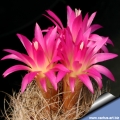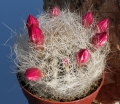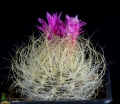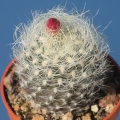Donate now to support the LLIFLE projects.
Your support is critical to our success.
Your support is critical to our success.
Accepted Scientific Name: Eriosyce senilis (Backeb.) Katt.
Eriosyce (Cactac.) gen. revis. & ampl. (Succ. Pl. Res., 1) 119 (1994)
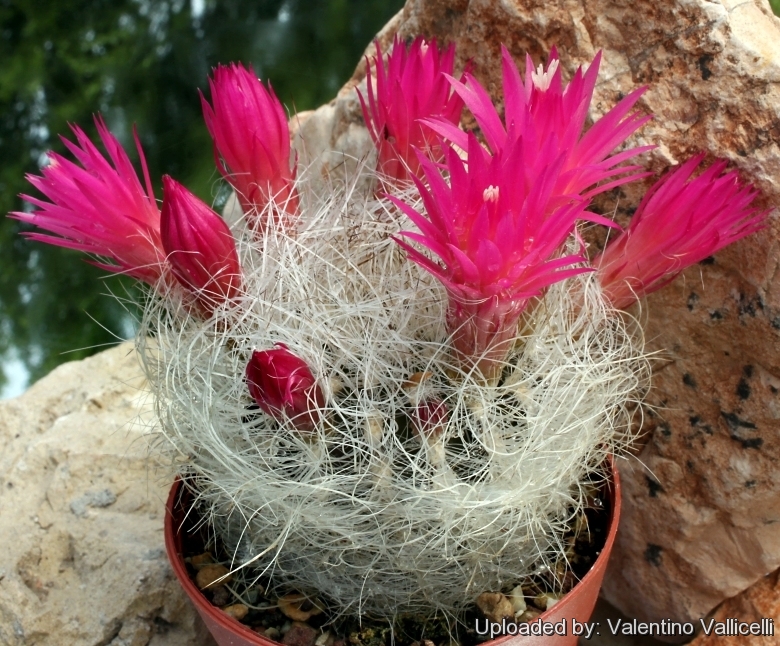
Echinocactus senilis (Eriosyce senilis) Photo by: Valentino Vallicelli
The ssp. senilis typically has thin twisted white spines and flowers with few bristles and wool. But the spines are quite variable both in shape and colour, and specimens are different one from each other.
The ssp. senilis typically has thin twisted white spines and flowers with few bristles and wool. But the spines are quite variable both in shape and colour, and specimens are different one from each other.
Synonyms:
- Eriosyce senilis (Backeb.) Katt.
- Echinocactus senilis Phil.
- Euporteria senilis (Phil.) Kreuz. & Buining
- Neoporteria nidus f. senilis (Phil.) Donald & G.D.Rowley
- Neoporteria senilis (Phil.) Backeb.
See all synonyms of Eriosyce senilis
back
Accepted name in llifle Database:Eriosyce senilis (Backeb.) Katt.
Eriosyce (Cactac.) gen. revis. & ampl. (Succ. Pl. Res., 1) 119 (1994)
Synonymy: 23
- Eriosyce senilis (Backeb.) Katt.
- Echinocactus senilis Phil.
- Euporteria senilis (Phil.) Kreuz. & Buining
- Neoporteria nidus f. senilis (Phil.) Donald & G.D.Rowley
- Neoporteria senilis (Phil.) Backeb.
- Eriosyce nidus var. matancillana (F.Ritter)
- Neoporteria nidus var. matancillana F.Ritter
- Eriosyce senilis var. multicolor hort.
- Eriosyce kunzei var. multicolor hort.
- Neoporteria multicolor F.Ritter
- Neoporteria nidus var. multicolor (F.Ritter) A.E.Hoffm.
- Eriosyce thiebautiana (Backeb.) Y.Itô
- Chilenia thiebautiana
- Neoporteria thiebautiana (Backeb.) Y.Itô
- Neoporteria gerocephala Y.Itô
- Neoporteria nidus var. gerocephala (Y.Itô) F.Ritter
- Neoporteria gerocephala f. aurea hort.
- Neoporteria gerocephala f. monstruosa hort.
- Neoporteria nidus (Söhrens) Britton & Rose
- Chilenia nidus (Söhrens) Backeb.
- Echinocactus nidus Söhrens
- Euporteria nidus (Söhrens) Kreuz. & Buining
- Nichelia nidus (Söhrens) Bullock
Eriosyce senilis subs. coimasensis (F.Ritter) Katt.
Eriosyce (Cactac.) gen. revis. & ampl. (Succ. Pl. Res., 1) 119 (1994)
Synonymy: 7
- Eriosyce senilis subs. coimasensis (F.Ritter) Katt.
- Neoporteria coimasensis F.Ritter
- Neoporteria nidus var. coimascensis (F.Ritter) A.E.Hoffm.
- Eriosyce senilis subs. coimasensis var. robusta (F.Ritter)
- Neoporteria coimasensis var. robusta (F.Ritter) F.Ritter
- Neoporteria robusta F.Ritter
- Neoporteria subgibbosa var. robusta (F.Ritter) A.E.Hoffm.
Eriosyce senilis subs. elquiensis Katt.
Eriosyce (Cactac.) gen. revis. & ampl. (Succ. Pl. Res., 1) 119 (1994)
back
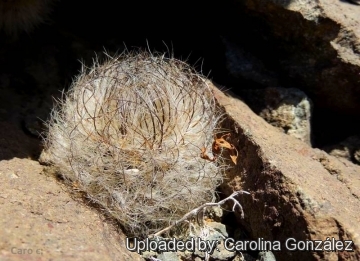
In habitat. (Eriosyce senilis) Photo by: Carolina González
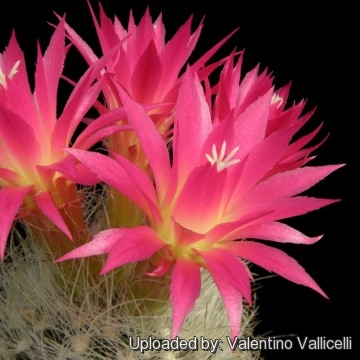
Echinocactus senilis (Eriosyce senilis) Photo by: Valentino Vallicelli
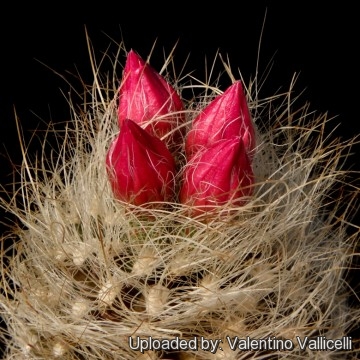
Echinocactus senilis (Eriosyce senilis) Photo by: Valentino Vallicelli
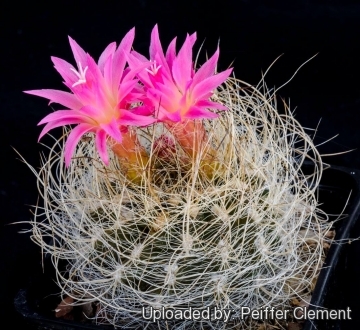
Echinocactus senilis (Eriosyce senilis) Photo by: Peiffer Clement
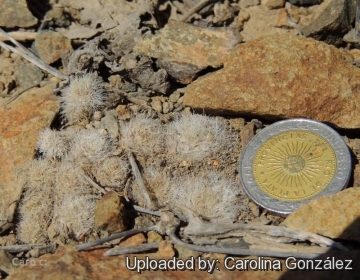
In habitat. (Eriosyce senilis) Photo by: Carolina González
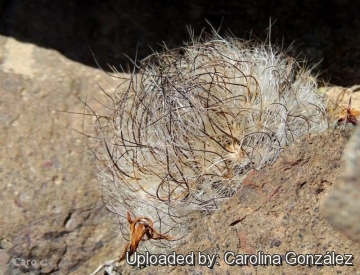
Echinocactus senilis (Eriosyce senilis) Photo by: Carolina González
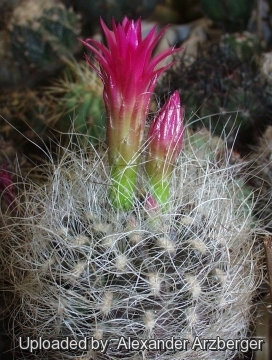
Echinocactus senilis (Eriosyce senilis) Photo by: Alexander Arzberger
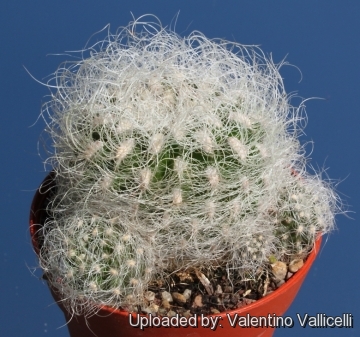
Echinocactus senilis (Eriosyce senilis) Photo by: Valentino Vallicelli
Your Photos
| Your Actions | |
|---|---|
| Back to Echinocactus index | |
| Back to Cactaceae index | |
 |
Back to Cacti Encyclopedia index |








